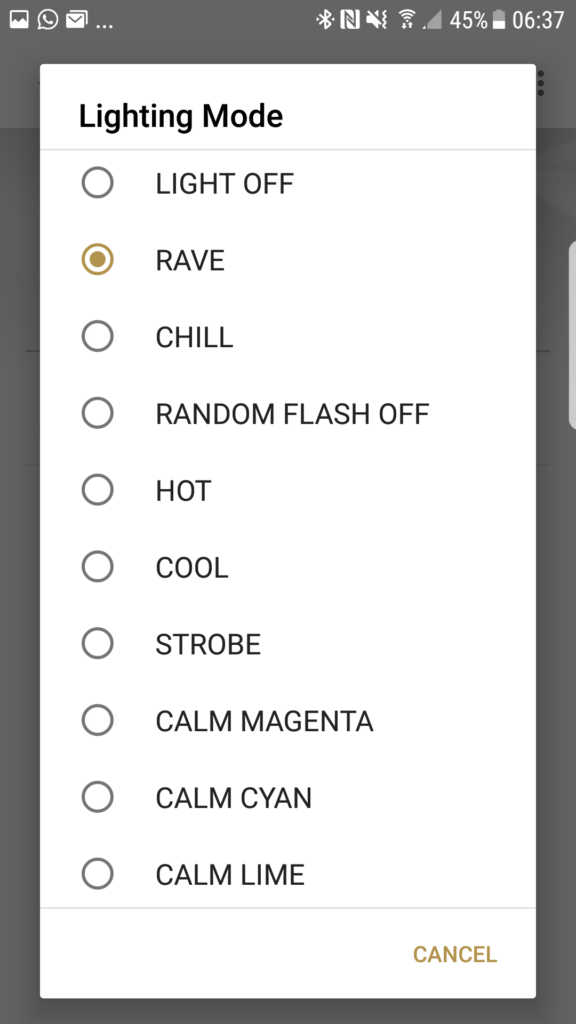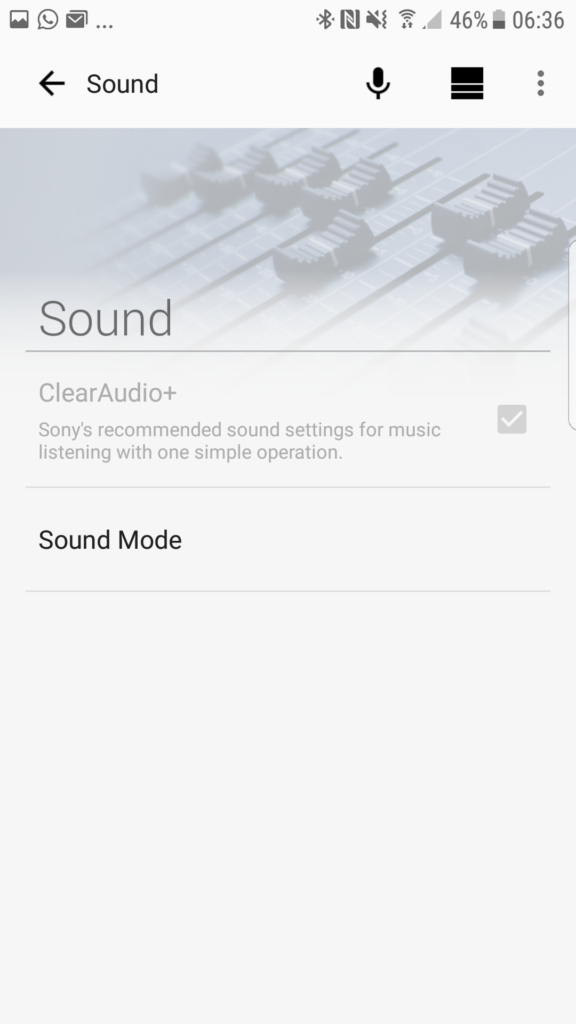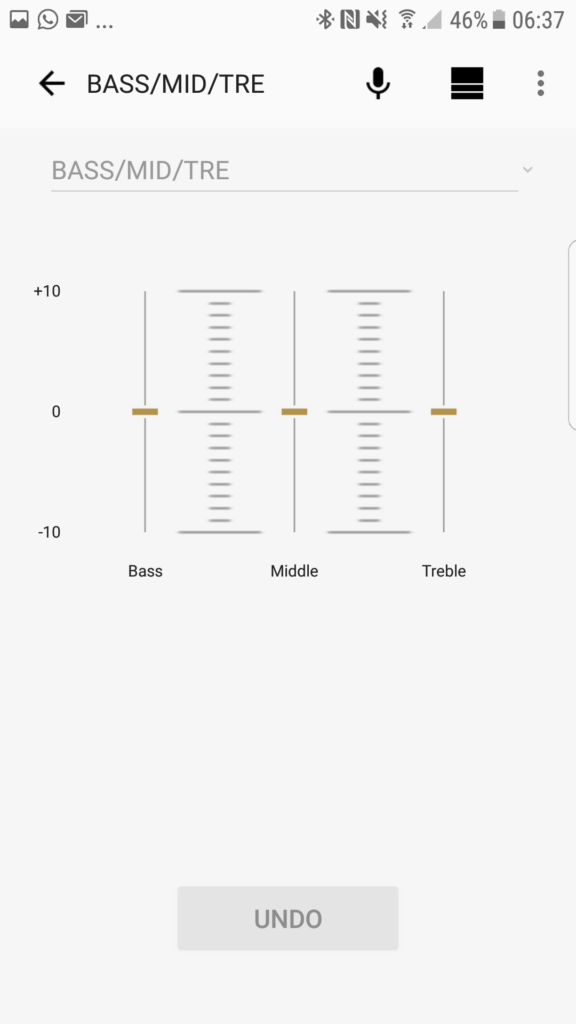
Specs
- Frequency response: 20 – 20kHz
- Supported Codecs: SBC, AAC, LDAC
- Speaker type: Full range
- Weight: 1500g
- Battery-life : up to 24 hours
- Water protection : IP67
Packaging

The XB41’s packaging is practically identical to that of the XB31 and XB21 apart from need for larger dimensions in order to accommodate the increased size of the XB41 over its smaller siblings. Sony is sure to advertise some of the main features of the speaker, particularly the IP67 water-proof rating, the 24-hour battery life, and the couple of connectivity features which allows you to connect multiple compatible products wirelessly to each other in 2 distinctive manners.
What’s In The Box
- Sony SRS-XB41
- Micro-USB charging cable
- DC mains power supply
- 3x mains power supply adapters
- Quick start guide
Accessories

Sony didn’t exactly try very hard to include much with the XB41 other than a micro-USB cable used to charge it up. Surely, at an asking price of $250, they could have at least some added some kind of storage/carrying pouch. As these particular class of speakers are intended for portable use, as opposed to a more “lifestyle” type of speaker which is usually designated to a desk or shelf, so having even just a simple cloth-type of carrying pouch to protect it from minor scuffs would’ve been nice.
Design


Not much can be said about the design of the XB41 that hasn’t been said about the XB21 and XB31 as all 3 speakers share a near-identical design. The biggest difference really just comes down to the size, but there are a few other aesthetic changes here and there.We still get that woven nylon texture which, at least from afar, almost looks like an anodized meshed-metal. By using a threaded material rather than actual metal, this still gives the XB41 a somewhat rugged look without the added weight of metal. But only the test of time would really be able to tell us just how rugged this design turns out to be. As is usually the case with a fabric, repeated scuffing tends to lead to fraying of the individual fibres, which then give it not only a worn look, but also compromises the structural integrity of the woven material.

As we look along the top side of the XB41 we can see some definite similarities in the design of the buttons panel. However, where the NFC chip and button panel were separated on the XB31 and XB21, Sony placed both of these squarely in the middle for the XB41. The little NFC-chip makes pairing the XB41 simply a breeze with other NFC-compatible smartphones and music players. But, unlike the XB21 and XB31, we now also get a dedicated Live button to enable the speaker’s Live digital signal processing feature. Whilst both the XB21 and XB31 also have this same feature, in order to activate it you’ll need to do so from within Sony’s Music Centre app. This can also still be done for the XB41, but having a dedicated hardware control almost negates the need for the app.If we look toward the rear of the XB41 we find a rubberized flap which covers numerous buttons and ports. Here the XB41 shares another commonality with the XB31 over the XB21 in the form of a full-sized female USB connector which allows you to plug in a USB charging cable for your phone or other device. What this means is that yet another feature on the XB41’s resume is that you can also use it as a portable battery bank as well.
There’s also a DC connector which is used to connect the XB41 up to a mains power supply (included in the box). Since it has a larger battery it makes sense to utilise mains power instead of just a USB connection for charging it up. The limited current supply of your usual run-of-the-mill USB connections would take a fair amount of time to charge the XB41, whereas you’d only need about 5 hours to charge it up from flat if using the DC connector.
The other rest of the buttons and ports are the same as for the rest of this line-up. There is a micro-USB port for charging the speaker as well as a regular 3.5mm analogue line-in port. There’s also a small reset button in case something goes a little funky and you need to reboot the speaker.
Additionally, there are 3 buttons that allow you to access or adjust a few key features. The first button, starting from the top, allows you to enable or disable the lighting effects as well as giving you a voice prompt of the estimated battery level remaining.
The middle button is labelled WPC which is short for Wireless Party Chain. Basically, this works similarly to the WPS function on other wireless devices. If you press this button on 2 or more compatible Sony speakers, they will link up with one another automatically. But we’ll delve into this feature in more depth later on.
The final button is labelled as ADD. This will essentially work in the same manner as the WPC feature, meaning that you’d press this button on 2 compatible devices and they’ll link up with one another. This function is, however, somewhat different to the WPC function, and we’ll get into what it is that differentiates them when we take a closer look at the features.


The last design-elements to mention are the inclusion of an LED strip which runs along nearly the entire perimeter of the device, two additional strobing LEDs on the extreme left and right of the front panel, and two more LEDs which light up the two outermost drivers. All of these LEDs are used to give a few lighting effects which are activated depending on how you physically interact with the speaker, or they can be synced up to the beat of the music.
Features
Whilst the XB41 (along with its more affordable siblings) do have some pretty gimmicky features, there are other features which are honestly useful and serve to extend the value of the product.
First up we’ve got what Sony calls a Wireless Party Chain feature. As briefly mentioned before, this allows you to wirelessly link up compatible Sony speakers to one another. This feature supports up to 100 simultaneous connections. What this feature is intended for is to then allow all the connected speakers to play the same music at the same time, which essentially means that you’re able to put together an enormous system, or at least it would have more punch than just a single speaker.
The other feature is similar to the WPC, but works slightly differently. This is called a Left and Right connection, which, as the name suggests, allows you to connect 2 speakers to each other but then the audio will be split into left and right channels. Each speaker on its own has left and right channels, but by being able to connect 2 speakers to each other wirelessly and then physically being able to sperate the left and right channels further from each other will allow you to get a wider and more realistic stereo image, along with giving you more punchy overall sound system. Of course, this will work best with 2 identical speakers. If you use 2 different types of speakers the you’ll end up with some channel imbalance and whatnot, and that’ll just lead to a wonky stereo image..which pretty much defeats the point of this feature.
Another feature is what Sony calls Party Booster. This is enabled by pressing the volume up and down buttons simultaneously for 3 seconds. When this function is enabled the speaker will produce specific sound effects depending on where you tap the device. This could probably turn out to be a fun little feature if you’ve got a group of people and a couple of compatible Sony speakers all linked up to one another. But, for the most part, this is one of those gimmicks that you’re unlikely to use very often.


The last feature isn’t specific to the XB41, but instead comes in the form of Sony’s Music Centre app which the XB41 is fully compatible with. From within this app you can change various settings such as the lighting effects and sound modes.
For the lighting effects, or Illumination as Sony calls it, we’ve got the option to turn the lights off completely, or to select between a couple of effects such as Rave, Chill, or Strobe, Hot, Cool, and various Calm lighting effects.


For the Sound settings we can enable Sony’s recommended ClearAudio+ sound setting, or we can opt for a few other presets including Live Sound. What Live Sound attempts to do is to artificially widen the stereo image, giving you somewhat of the illusion of a bigger speaker. But we’ll get into how effective this is when we discuss the sound.

There’s also the option to manually adjust and apply an EQ curve. It’s a pretty simplistic EQ at best, giving you just 3 bands to work with and so allowing you only to only make broad changes within the bass, mid, and treble regions. There’s no fine tuning here, unfortunately.
Sound
Since the XB41 is the largest portable speaker in Sony’s Extra Bass line, you might expect it to also offer the most powerful sound. Well, you’d be right.
The 58mm drivers can hit some pretty low notes and as such would probably be a good choice for outdoor settings.
I’m not quite sure what the frequency response graph looks like for the XB41, but my guess would be something that looks rather v-shaped. An elevated bass response is a good thing for outdoor use, but if you’re looking for something to use indoors or in more intimate/quieter settings, then I feel that the bass is perhaps just too much, and likewise the upper registers were probably tuned in such a way to try and balance in with the bass, but as a result this tend to mask the mids by a fair margin. But really, I don’t find the treble quite as offensive as the bass region, simply because the increase in bass presence leads to a somewhat muddy midrange. What is gained in punch is lost in clarity and outright sonic detail.
Of course, this only matters if you’re actually listening to the music. If your idea is to have a speaker that gives you a more “lively” party vibe at your next outdoor barbecue or pool party, then the XB41 will do a fine job.
Value
As far as the value is concerned, well, this is often a pretty subjective affair. In this instance that’s going to depend entirely on your intended usage.
The XB41 gets pretty loud and offers a decent amount of punch. So, as mentioned, if you need something for an outdoor setting, then the XB41 could very well be the perfect device for you.
However, if you (like myself) care about outright audio quality above all else, then the sound signature of the XB41 leaves a fair amount to be desired. As such, I’d say to give the smaller sibling – the XB31 – a shot instead. It offers a more balanced sound, but due to the smaller drivers one can obviously not expect quite the same punch as that of the XB41. The XB31 is more of a ‘jack of all trades’ as it works well for indoor and outdoor usage, and being smaller than the XB41 it’s more portable too.
But, for what it is, the XB41 is an acceptably good performer for outdoor, non-critical listening sessions which comes with a reasonable price-tag.

